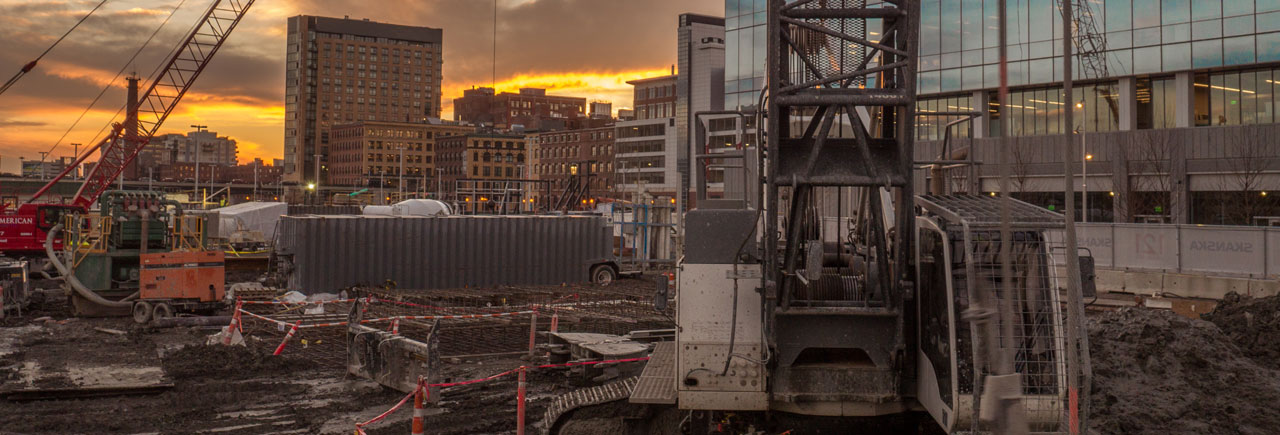BOSTON FROM PAST TO THE FUTURE
TREVIICOS is working at the new 121 Seaport L2, a construction project of mixed-development building (offices and apartments) in downtown Boston. There are a lot of obstructions in the 15-20 ft top fill. The mostly man-made debris includes wood, bricks, concrete, pieces of sheet piles, rebar, wire, insulation, and waterproofing, wich covers the under fill of sand, sand with shells, sand and gravel, clay and silt.
Part of the slurry wall alignment runs along the existing subway tunnel, Silver Line, as close as 1 m.
Special works included diaphragm (slurry) wall by clamshell and LBEs; approx. 7,500 m2 of diaphragm wall by clamshell up to 26 m deep and no.50 LBEs, same depth. Total volume of concrete: (1,500 m3 for the LBEs, 2,300 m3 for slurry wall.
During works, a special surprise was founded: a 19th-century shipwreck. "Nothing like this has been found in Boston, in filled-in ground, before" City of Boston archaeologist Joe Bagley said. “This is incredibly rare and incredibly amazing.” Skanska and TREVIICOS have temporarily stopped construction so that experts can examine the ship’s remains and learn more about its origins.
Bagley said the ship is roughly 50 feet long and could be older than the date when it ran aground or sank. Based on remnants of barrels of lime found in the boat’s bottom, Bagley believes the vessel may have travelled from Maine to Boston before meeting its demise.
Jamie Kingman Rice, director of library services at the Maine Historical Society, said her theory, without having additional information, is that the vessel arrived in Boston from the Rockland-Thomaston area, which had a prolific shipping industry and lime trade during that time.
121 Seaport L2
owner: Skanska USA Building;
engineer McNamara/Salvia Inc.;
main contractor: Skanska USA Civil Inc.

